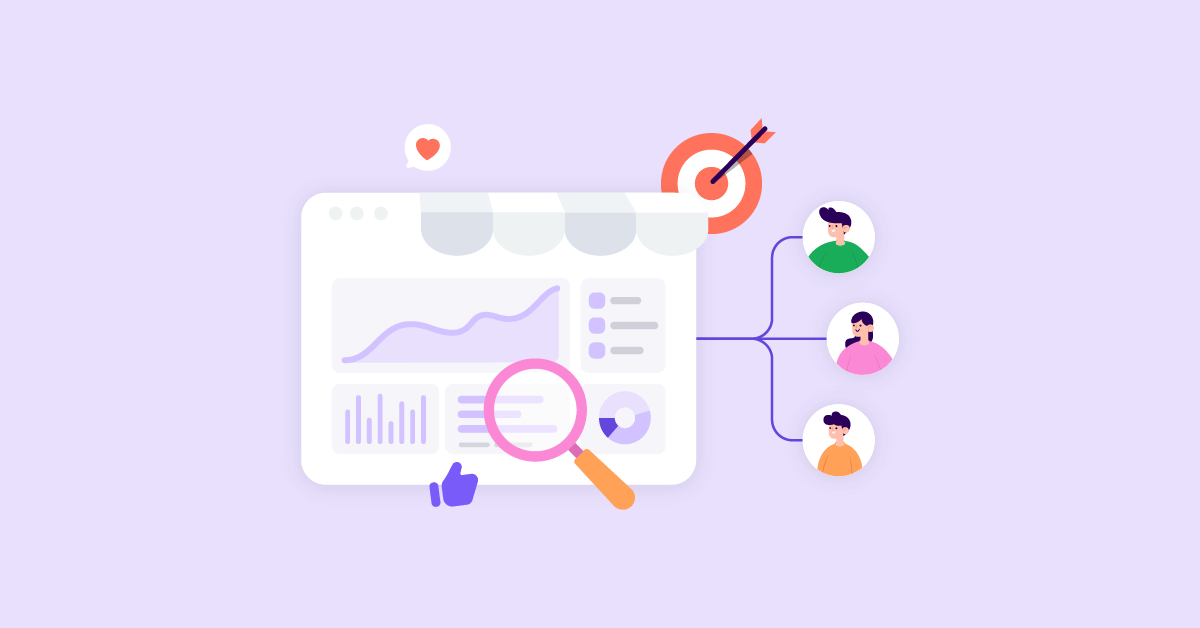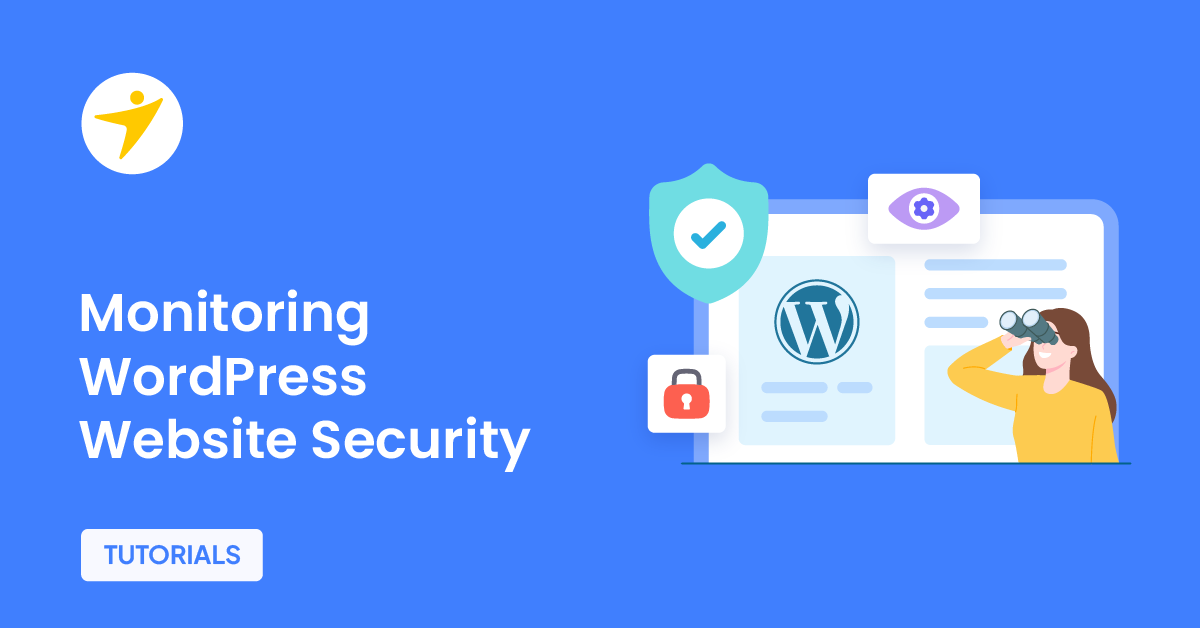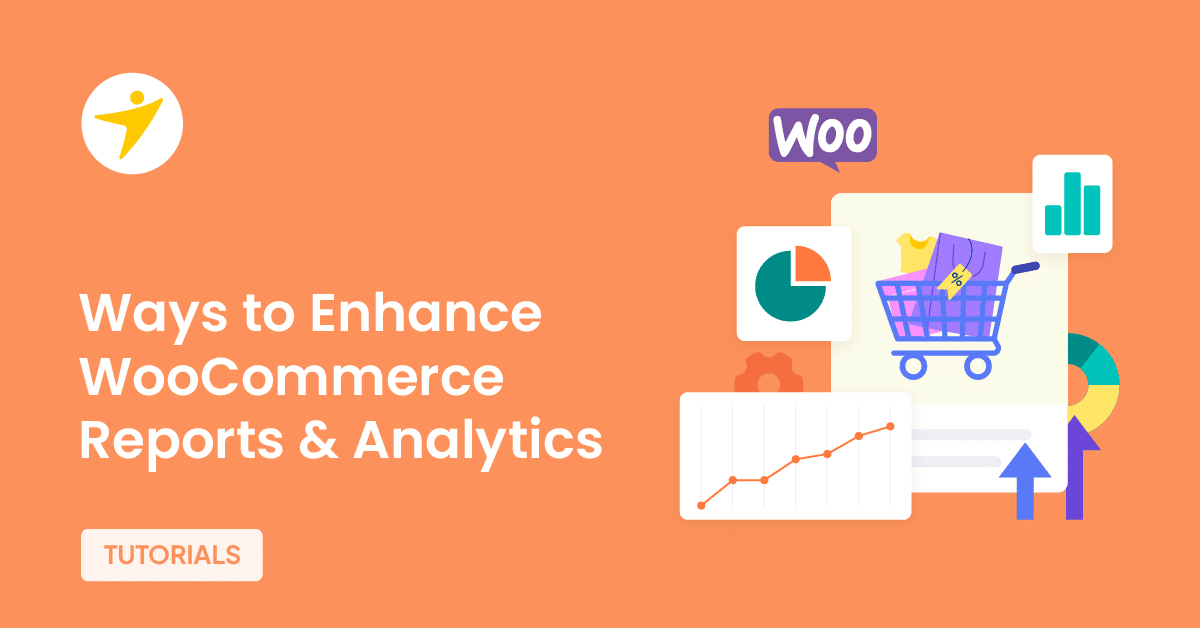Today’s customers expect a fully personalized ecommerce personalization experience. From the social media ad, to the company’s homepage, all the way to the checkout, it should be tailored to them.
Personalization helps you target specific segments of your customer base and show them content that directly aligns with their interests and needs.
In this YayCommerce blog post, we explain why you should be using ecommerce personalization and how it can boost your online stores (WooCommerce, Shopify, WordPress, etc.). We’ll also go through the different types of ecommerce personalization examples and data collection you should be using.
Ready? Let’s get started!
5 Reasons Why You Should Do Ecommerce Personalization
Let’s take a look at some interesting statistics about ecommerce personalization that establishes why personalization is so important to your WooCommerce store:
- Personalized display ads have a 10-times higher CTR when compared to traditional display ads
- 78% of shoppers are more likely to purchase again from a company that offers personalized experiences
- 74% of customers feel frustrated when website content isn’t personalized
- Using advanced personalization tactics can lead to up to 20 dollars return for every 1 dollar invested
- Personalization can increase conversion rate up to 2.8% of total page views – which may not sound like a lot but it really adds up!
As you can see, successful ecommerce personalization can boost several parts of your business revenue and help with your WooCommerce and Shopify ecommerce development. You improve engagement with established customers and make fantastic first impressions on new visitors. It’s a win-win!
These statistics also show that personalization is rapidly becoming the new norm for ecommerce. To keep up with competitors, customization is key.
Personalization Types
When personalizing WooCommerce websites, there are two main approaches your company can use. They are called prescriptive and descriptive methods. We’ll go through the differences here:
Prescriptive
Prescriptive personalization can also be called the “rule-based” method. By using this method you need to specify the rules that determine which content should be presented to different visitor segments.
These rules can include recent activities, browsing history, preferences, clicking behavior, time of day, and more.
Identifying different segments of your customer base ensures that each visitor is only seeing content that is relevant to them.
For example, if you have a WooCommerce customer who has previously downloaded a guide on how to transfer documents from word to pdf, you could show them other downloadable guides or software to solve this problem.
Adaptive
Contrary to prescriptive personalization, adaptive personalization is an automated process that continually applies an evolving self-managed set of rules. In other words, it modifies its rules continuously, and the best, or the most relevant rule, will automatically be used for each visitor.
The automated nature of adaptive WooCommerce personalization makes it super low-maintenance! It takes the pressure off your ecommerce inventory manager, marketing team, and salespeople. This means your team’s valuable time can be spent working on other parts of your ecommerce strategy.

Personalization Starts with Collecting User Information
To be able to display the most dynamic content and make the best use of ecommerce personalization, you need to find out as much as possible about your visitors. That’s where data collection comes into play.
There are two main forms of data collection that can be distinguished: explicit and implicit data collection, let’s look at how each type of data collection occurs on your WooCommerce store.
Explicit Data Collection
You need to collect data from your visitors that describes the users’ interests, preferences, activities, and context.
Here are some examples of explicit data collection:
- Asking a visitor to rate an item on a sliding scale
- Asking a visitor to search
- Asking a visitor to rank a collection of items from favorite to least favorite
- Presenting two items to a visitor and asking them to choose their preferred item
- Asking a visitor to create a list of items that they like
- Asking a visitor to select their gender, location, etc.
For example, you could ask visitors to rank the best contract management software on offer or to choose between two different hotels.
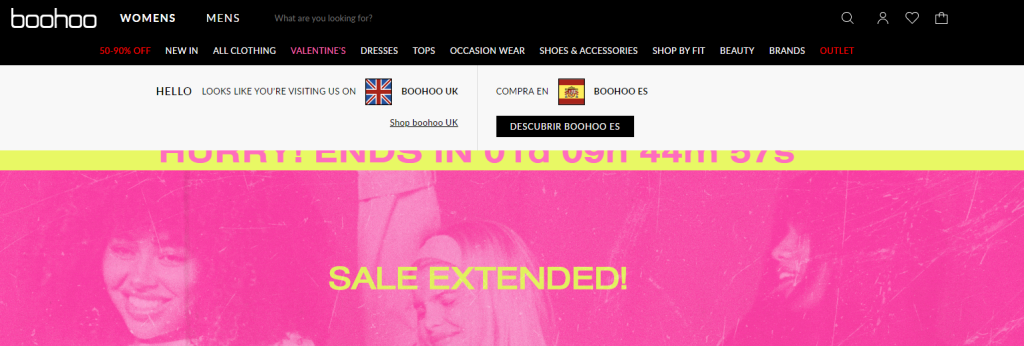
Implicit data collection
Implicit data collection is used to adapt the delivery of content to the visitor. A visitor’s behavior is monitored and content is presented to them based on business logic.
The following methods of implicit data collection are used to develop the profile of a WooCommerce visitor:
- Observing the items that a visitor views in an online store
- Analyzing item/visitor viewing times
- Keeping a record of the items that a visitor purchases online
- Analyzing the visitor’s language and choice of words
- Obtaining a list of items that a visitor has listened to or watched on their computer
- Establishing a customer referral program
- Analyzing the visitor’s social network, behavior, and engagement
For instance, your visitors might have been viewing an agency contract template or accountancy software upgrades. You can use this information to personalize offers for them or suggest other products/services that they may be interested in.
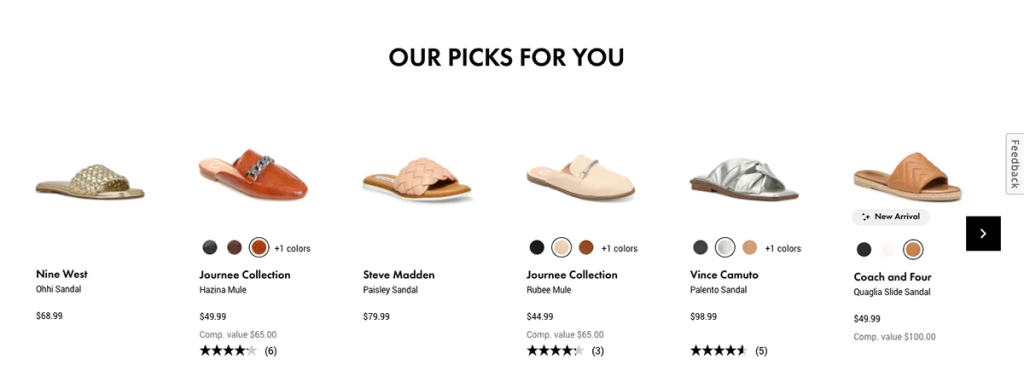
5 Ecommerce Personalization Examples to Improve the Customer Journey
Let’s see how the top WooCommerce stores use personalization to improve the customer journey and increase their sales and conversions. When managing a customer journey it is important to optimize every step of the process.
Ecommerce personalization can appeal to a wide range of characteristics, depending on the customer and what action you want them to take. Here are some great examples of WooCommerce personalized shopping experiences and what makes them work.
1. Season
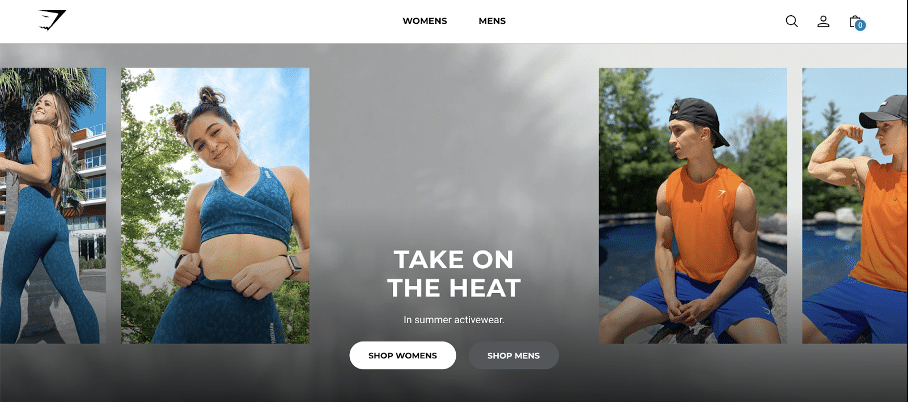
Customers in different locations will have different needs – these may also change with the seasons! The region a customer is browsing from is fairly detailed data to collect (implicitly or explicitly) and can really help personalization.
The above homepage would make sense for an American customer in July, but would seem odd to an Australian because of the flipped seasons – what may seem like a minor slip could be the factor that loses you a potential customer.
This example also takes a step to segment its customer base by offering links to the women’s and men’s sections. Just another little detail that makes a big difference in showing relevant content to your WooCommerce online shoppers!
2. Location
Here we’re going to look at two examples of WooCommerce personalizing by location, using two of the different types we mentioned earlier.
This first popup relies on explicit data collection – the customer is asked to select their country from the list provided. This popup is also clever because it preempts a common question from customers, which is ‘where do you ship to?’
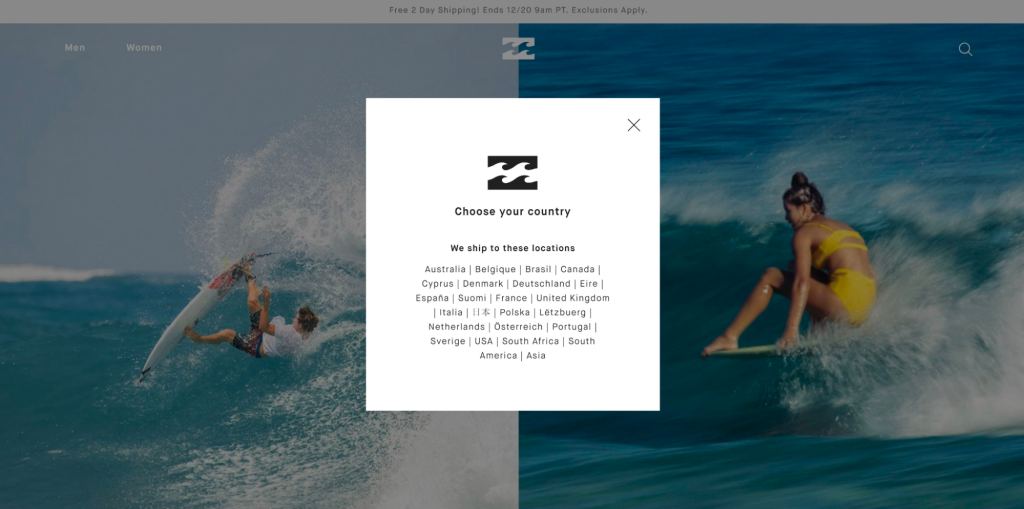
The location personalization from this beer site, however, uses implicit data instead. The header is automatically personalized with the customer’s country. This example requires even less effort from the WooCommerce site visitor, because they don’t have to select their country themselves. Eliminating these extra steps makes your ecommerce customer journey more streamlined.

3. Recent Browsing
This WooCommerce clothing site has used a customer’s recently purchased products to generate a personalized popup. A strategy based on related products is a great choice for clothing sites since customers often look for items in a similar style so that they work well together in an outfit.
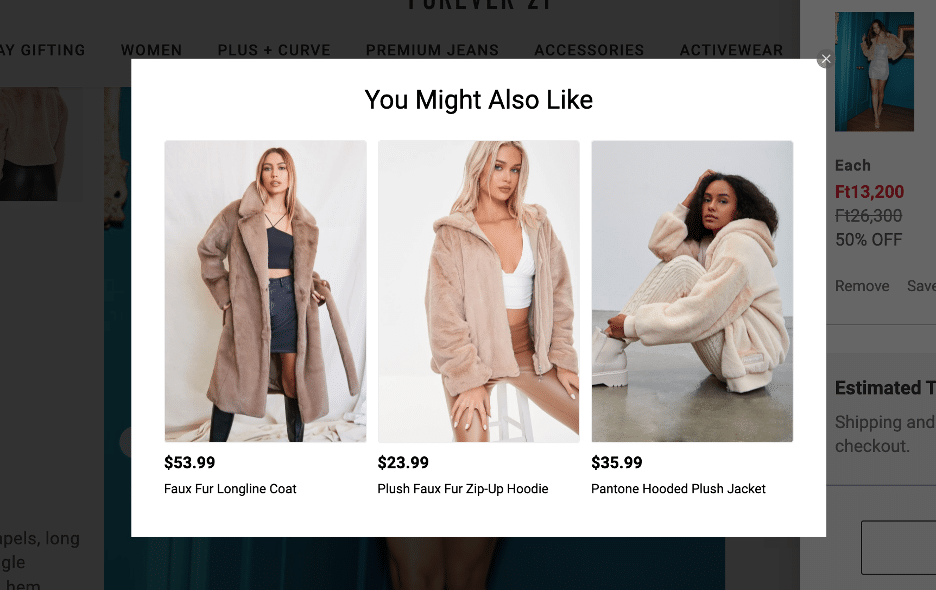
That leads us to a top tip: integrate your ecommerce personalization with your business type and goals. Just like with these personalized adverts, there is no one-size-fits-all solution. See what works best for you!
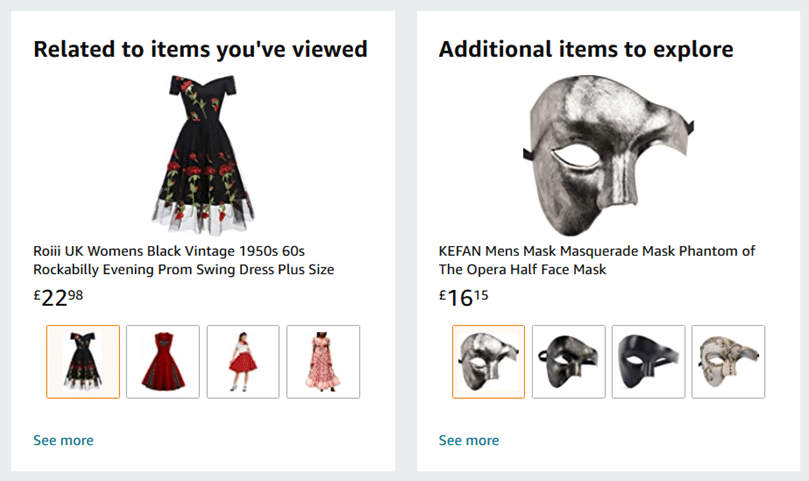
Amazon helped bring ecommerce personalization into our everyday browsing experience, so of course we have to use them as an example. Not only does this section of the user homepage show recently viewed items, but it separates different types of products. In this case, the algorithm separates recommendations for dresses and masks.
4. Discount Strategy
Offering discounts is perhaps the oldest trick in the book when it comes to marketing. You just can’t beat a good deal! The skill, however, comes from knowing when is the right time to reveal that discount.
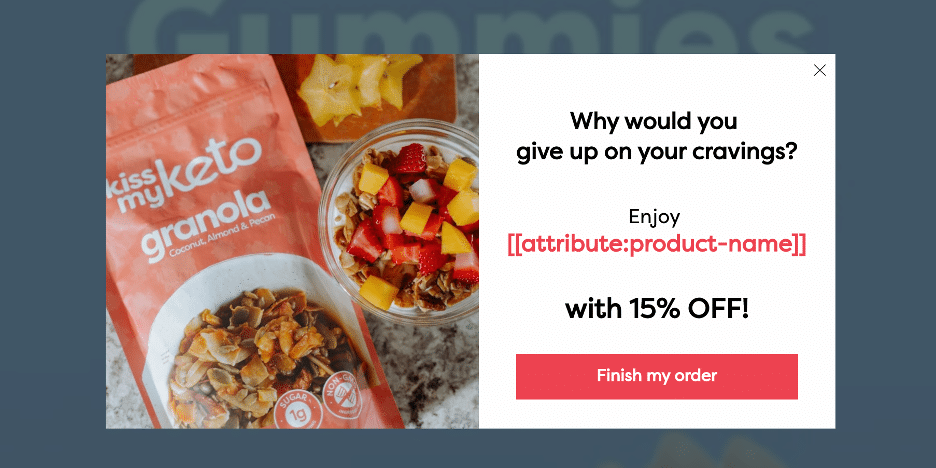
Here, Kiss My Keto is offering a discount to avoid cart abandonment – one of the biggest problems in online retail. If a visitor seems to be spending a little too long on that ‘proceed to checkout’ stage, then a deal like this is the perfect prompt.
You can also see that the popup is coded to swap out the red text with whatever product the customer is interested in. This is an excellent example of that adaptive personalization that we talked about earlier!
5. Traffic Source
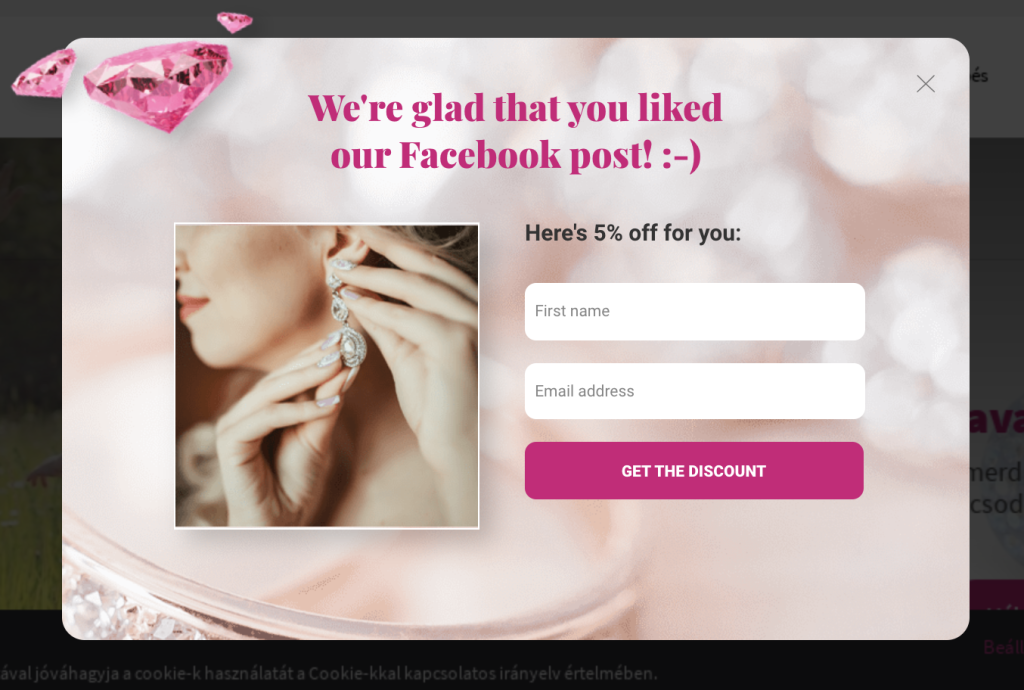
This jewelry site popup combines a discount offer with traffic source data to create a super successful bit of personalization. It presents the 5% as a special reward just for visitors who engage with their Facebook page, which adds the kind of unique feeling that WooCommerce customers are so desperately looking for.
The Best Ecommerce Personalization Tools for Your WooCommerce Store
With so many ecommerce tools out there, it can be tricky to know where to look!
A key question to ask when browsing ecommerce personalization tools is: does this work for both your desktop and mobile site? Over half of web traffic comes via mobile so appealing to mobile customers is essential.
To make things easier we’ve put together a list of some of the best ecommerce personalization tools for your business’ website.
1. WooCommerce Customizable Products
YaySwatches, YayExtra are among the best WooCommerce variation swatches and addon for product plugins.
YaySwatches presents a unique feature that enables you to pair variable products with stunning swatches, making it easier for customers to select their desired product. Moreover, our product showcase is designed to captivate the attention of potential buyers and provide them with an enjoyable shopping experience.
You can now start selling personalized and more sophisticated products and services to your customers with YayExtra.
2. OptiMonk
This SaaS company provides personalized popups for each stage of the customer browsing experience. A well-timed popup can dramatically reduce bounce rate and shopping cart abandonment.
3. WooCommerce Dynamic Pricing and Discounts
Do you want to show your customers how much you appreciate them? With YayPricing – WooCommerce Dynamic Pricing & Discounts, you can offer special gifts or BOGO discounts that will make their day! Imagine the joy on their faces when they receive a personalized discount as a thank-you for their loyalty. YayPricing helps you create dynamic pricing rules that will boost your conversion rates and create a truly unforgettable customer experience.
4. Continuous Shopping
This algorithm is inspired by the ‘Continue watching’ feature on Netflix. It reminds customers of which products they viewed on their last visit to the site, which encourages them to make that step from browsing to purchasing.
5. User-generated content
Encourage customers to share reviews and pictures of their recent purchases so that customers get recommendations from their real-life peers. The best thing about this content? It’s made at no cost to your business!
6. Agile Swarming
While this strategy may not be specific to ecommerce, it can help solve many problems that could come up on your website. Swarming consolidates your entire team’s efforts on the current issue and helps share ideas to solve it quickly.
7. Clerk.io
Add a dynamic internal search engine to your website that adapts to visitors’ browsing habits and shows them personalized search results.
8. WooCommerce Email Customizer
When it comes to personalizing the customer journey, it’s important to consider not only product pages but also email communication.
If you’re in search of a top-quality WooCommerce email customizer plugin, look no further than YayMail. This plugin offers a user-friendly drag-and-drop email builder that allows you to customize your WooCommerce emails without the need for coding knowledge.
With over 50 third-party WooCommerce integrations, YayMail is a powerful tool that can help you create personalized and engaging order confirmation emails.
Additionally, you can take advantage of the 50+ YayMail Addons to further customize your marketplace emails, subscription emails, create HTML email templates, and optimize your email marketing campaigns.
So it’s time to bring a flawless on-page experience to your email communication with those WooCommerce personalization tools.
Summing up
With these stats, tips, and tools you’ve got everything you need to start hitting your business goals. You’re ready to start personalizing your ecommerce experience!
Use these examples and strategies to inspire your own personalized online business. And remember to keep in mind some of those top tips such as optimizing your website for mobile, and adapting ecommerce strategies to match your business type.
Share this article to help even more people improve their ecommerce business!
